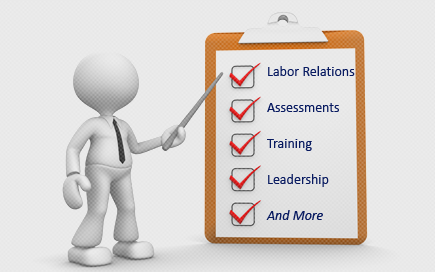NLRB General Counsel Signals Important Changes at NLRB.
Article By: Howard M. Bloom Philip B. Rosen
National Labor Relations Board General Counsel Peter Robb continues to outline his plans for change at the NLRB. First came his sweeping five-page Memorandum directing NLRB Regional Offices to submit to his Division of Advice for review cases involving “significant legal issues.” See our article, “New Labor Board General Counsel Issues Plans For Reversing Course.” That was followed by his Memorandum to Regional Offices setting forth a variety of circumstances under which those offices should process “currently active [representation] cases” applying the NLRB’s recent decision (PCC Structurals, Inc.) that overruled Specialty Healthcare. For more on that Memorandum, see “New NLRB GC Opens Door to Possible Widespread Bargaining Unit Changes.”
Robb’s latest plan for change was revealed in a recent conference call with NLRB regional directors. During that January 11, 2018 call, Robb said he wants to reorganize the agency’s 26 regional offices into a smaller number of districts or regions, run by officials who report directly to the General Counsel, Bloomberg Law has reported. This could place decision-making in the hands of officials who are not located in the local regional offices. An NLRB spokesperson said there is currently no plan to reorganize the Board’s regional office structure.
Robb’s reported plan could change significantly how the NLRB operates. Presently, regional directors generally decide how their offices investigate unfair labor practice (ULP) charges and handle representation proceedings. They decide the course of ULP allegations against employers and unions: a formal complaint for hearing by an administrative law judge or dismissal.
Thomas P. McDonough also contributed to this article.
Millennials accepting of unions — who should respond
By Bill Knight / Retired WIU Journalism Professor
Thursday Posted Jan 18, 2018 at 11:49 AM
Big improvements can start with little steps.
For instance, Jimmy Hoffa decades ago helped organize truckers by going from job site to job site — truck stops, loading docks, terminals and more — and by 1964 the Teamsters represented almost half a million people who worked under a Master Freight Agreement.
And — though stereotypes of any age group can be suspect, from “the Greatest Generation” to “Baby Boomers” to “Generation X,” a few statistics can reveal Big Pictures. For example, Millennials — broadly, those born between 1981 and 1997 — are the least unionized age group in the United States. That’s despite 55 percent of 18- to 29-year-old Americans approving of labor unions, according to Pew Research.
The U.S. workforce includes 79 million Millennials.
In the Pacific Northwest, south of Seattle, a handful of Millennials at the Humane Society of Tacoma and Pierce County in November successfully achieved recognition as a bargaining unit for the International Brotherhood of Teamsters (IBT). Six kennel aides — all of them 26 years old or younger — approached the Teamsters with concerns about wages, working conditions and job security. They wanted to improve their jobs for themselves and their animal clients.
“We’re excited about young Millennials,” said Paul Zilly, communications director of IBT Local 117, with offices in nearby Tukwila, Wash. “There are six of them and they’re all in their 20s. They saw what [belonging to and bargaining as a union did] for 30 of our members who are already employed there as vet techs and customer-service representatives.
“They love working at their jobs,” Zilly added, talking to Tom Campbell of Western New York Labor Today. “But they needed to make more money to continue to afford working there. Pay was a major issue.”
That issue must resonate with young adults, but, again, as much as Millenniamay have similar concerns and approve of unions, few are members, reports Judith Lewis Mernit of Fast Company magazine. Only 10.7 percent of wage and salary workers overall currently belong to a union, according to the Bureau of Labor Statistics. That percentage compares to 20.1 percent in 1983.
One reason may be that too many Millennials remain largely unaware of unions, according to Larry Williams of the Progressive Workers Union, which maintains the web sitehttps://unionbase.org/, a social-network organizing platform launched on Labor Day.
“Union contracts can cover a wide array of things outside of your workplace,” Williams said, “like child care, health care, education. Before there was the Affordable Care Act, it was unions who negotiated the best health care for their workers.”
So organized labor should make Millennials more aware of the possibilities at hand.
In the state of Washington, Teamsters Local 117 represents 17,000 people who work at about 200 employers across the state. Those union members include grocery warehouse workers, truck drivers, law enforcement officers, wastewater treatment professionals, clerical workers, public-sector professionals, state correctional workers and zookeepers at Seattle’s Woodlawn Park Zoo.
“They’re seeing that being joined together in something that is or looks like a union is the way that we actually live in a democracy,” UNITE HERE staffer Elle Farmer told Merni. “It’s the way we enforce democracy.
“It’s not 100 percent, it’s not across the board, and it’s never perfect,” she continued. “But organizing around the conditions of our existence in this world will always be powerful.”
Power through collective bargaining can translate to a voice at work and job security as well as better wages.
“What our generation has lacked – and needs – is stability,” says Maggie Thompson, who calls herself an ‘old millennial’ at 32 and tracks labor trends for the Center for American Progress. “Unions offer that prospect of stability.”
Now unions should step up — even in small ways — their outreach to younger workers at all sorts of companies, taking advantage of an openness to unionizing and a big segment of the workforce.
Contact Bill at Bill.Knight@hotmail.com; for archives, enter “mayflyproductions.blogspot.com” into web address bar.



